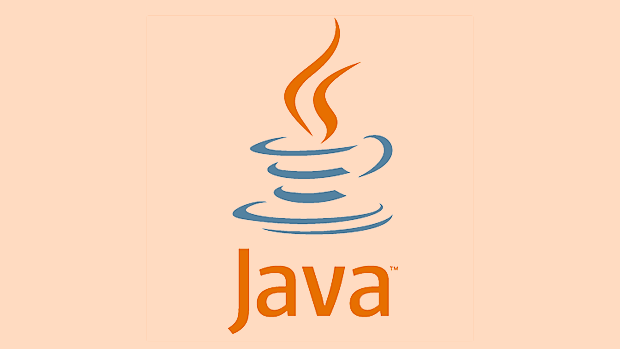Java Modules are a feature introduced in Java 9 to improve code organization, maintainability, and security. 1. They allow developers to group related packages into modules with explicit dependencies and exports. 2. Each module includes a module-info.java file that declares its name, required modules, and exported packages. 3. Modules address issues like JAR hell by making dependencies explicit and restricting access to internal APIs. 4. They enable better encapsulation and reduce application size by including only necessary modules. 5. Compilation and execution use --module-path instead of the classpath. 6. Common uses include splitting large apps, creating custom runtime images, and avoiding reliance on internal JDK APIs.

Java Modules, introduced in Java 9 as part of the Java Platform Module System (JPMS), are a way to organize and manage large codebases more effectively. The main idea is to group related packages and resources into modules, which can explicitly declare their dependencies and what they expose to other modules.

This helps improve maintainability, security, and performance by making dependencies clearer and restricting access at the module level.

What Exactly Is a Java Module?
A Java module is a collection of packages and resources that are grouped together with a special descriptor file called module-info.java. This file defines:
- The module’s name
- Which packages it exports (makes available to others)
- Which other modules it requires
For example, if you have a module named com.example.myapp, its module-info.java might look like this:

module com.example.myapp {
requires java.base;
exports com.example.myapp.core;
}Here, it says: "I need the java.base module" and "I make the com.example.myapp.core package available to others."
Why Were Modules Introduced?
Before JPMS, Java used the classpath to locate classes and libraries. But this led to problems like JAR hell, where conflicting versions of the same library could break things silently or at runtime.
Modules solve this by:
- Making dependencies explicit — you have to declare what your code needs
- Preventing accidental use of internal APIs (like sun.misc.Unsafe)
- Allowing better encapsulation — not everything in a JAR has to be visible
They also help reduce the size of Java applications by letting developers include only the modules they need, which is especially useful for embedded systems or microservices.
How Do Modules Work in Practice?
When compiling or running a modular Java application, you use the --module-path instead of the traditional classpath. Here's how you compile and run a simple modular app:
Create a directory structure matching your module name:
src/ └── com.example.myapp/ ├── module-info.java └── com/example/myapp/core/MyApp.javaCompile with:
javac --module-path mods -d out src/com.example.myapp/module-info.java ...
Run with:
java --module-path out -m com.example.myapp/com.example.myapp.core.MyApp
If a module tries to access something it doesn’t require or isn't exported, the JVM will throw an error — helping catch issues early.
Common Use Cases and Examples
Some common scenarios where Java modules are especially helpful:
- Splitting large apps into smaller, manageable parts – Each team can own a module with clear boundaries.
-
Creating custom runtime images – Using
jlink, you can build a minimal Java runtime that includes only the modules your app needs. - Restricting usage of internal JDK APIs – Modules enforce rules so you don’t accidentally rely on unstable or unsupported classes.
Also, many standard Java libraries now publish modular versions, so you can take advantage of stronger dependency management without extra work.
That's the core idea behind Java Modules — basically a more structured and safer way to build and manage Java applications. It takes a little getting used to, especially if you're used to classpaths and flat JARs, but once you start organizing your code this way, it becomes easier to scale and maintain.
The above is the detailed content of Explain the concept of Java Modules (JPMS).. For more information, please follow other related articles on the PHP Chinese website!

Hot AI Tools

Undress AI Tool
Undress images for free

Undresser.AI Undress
AI-powered app for creating realistic nude photos

AI Clothes Remover
Online AI tool for removing clothes from photos.

Clothoff.io
AI clothes remover

Video Face Swap
Swap faces in any video effortlessly with our completely free AI face swap tool!

Hot Article

Hot Tools

Notepad++7.3.1
Easy-to-use and free code editor

SublimeText3 Chinese version
Chinese version, very easy to use

Zend Studio 13.0.1
Powerful PHP integrated development environment

Dreamweaver CS6
Visual web development tools

SublimeText3 Mac version
God-level code editing software (SublimeText3)

Hot Topics
 Difference between HashMap and Hashtable?
Jun 24, 2025 pm 09:41 PM
Difference between HashMap and Hashtable?
Jun 24, 2025 pm 09:41 PM
The difference between HashMap and Hashtable is mainly reflected in thread safety, null value support and performance. 1. In terms of thread safety, Hashtable is thread-safe, and its methods are mostly synchronous methods, while HashMap does not perform synchronization processing, which is not thread-safe; 2. In terms of null value support, HashMap allows one null key and multiple null values, while Hashtable does not allow null keys or values, otherwise a NullPointerException will be thrown; 3. In terms of performance, HashMap is more efficient because there is no synchronization mechanism, and Hashtable has a low locking performance for each operation. It is recommended to use ConcurrentHashMap instead.
 What are static methods in interfaces?
Jun 24, 2025 pm 10:57 PM
What are static methods in interfaces?
Jun 24, 2025 pm 10:57 PM
StaticmethodsininterfaceswereintroducedinJava8toallowutilityfunctionswithintheinterfaceitself.BeforeJava8,suchfunctionsrequiredseparatehelperclasses,leadingtodisorganizedcode.Now,staticmethodsprovidethreekeybenefits:1)theyenableutilitymethodsdirectly
 How does JIT compiler optimize code?
Jun 24, 2025 pm 10:45 PM
How does JIT compiler optimize code?
Jun 24, 2025 pm 10:45 PM
The JIT compiler optimizes code through four methods: method inline, hot spot detection and compilation, type speculation and devirtualization, and redundant operation elimination. 1. Method inline reduces call overhead and inserts frequently called small methods directly into the call; 2. Hot spot detection and high-frequency code execution and centrally optimize it to save resources; 3. Type speculation collects runtime type information to achieve devirtualization calls, improving efficiency; 4. Redundant operations eliminate useless calculations and inspections based on operational data deletion, enhancing performance.
 What is an instance initializer block?
Jun 25, 2025 pm 12:21 PM
What is an instance initializer block?
Jun 25, 2025 pm 12:21 PM
Instance initialization blocks are used in Java to run initialization logic when creating objects, which are executed before the constructor. It is suitable for scenarios where multiple constructors share initialization code, complex field initialization, or anonymous class initialization scenarios. Unlike static initialization blocks, it is executed every time it is instantiated, while static initialization blocks only run once when the class is loaded.
 What is the Factory pattern?
Jun 24, 2025 pm 11:29 PM
What is the Factory pattern?
Jun 24, 2025 pm 11:29 PM
Factory mode is used to encapsulate object creation logic, making the code more flexible, easy to maintain, and loosely coupled. The core answer is: by centrally managing object creation logic, hiding implementation details, and supporting the creation of multiple related objects. The specific description is as follows: the factory mode handes object creation to a special factory class or method for processing, avoiding the use of newClass() directly; it is suitable for scenarios where multiple types of related objects are created, creation logic may change, and implementation details need to be hidden; for example, in the payment processor, Stripe, PayPal and other instances are created through factories; its implementation includes the object returned by the factory class based on input parameters, and all objects realize a common interface; common variants include simple factories, factory methods and abstract factories, which are suitable for different complexities.
 What is the `final` keyword for variables?
Jun 24, 2025 pm 07:29 PM
What is the `final` keyword for variables?
Jun 24, 2025 pm 07:29 PM
InJava,thefinalkeywordpreventsavariable’svaluefrombeingchangedafterassignment,butitsbehaviordiffersforprimitivesandobjectreferences.Forprimitivevariables,finalmakesthevalueconstant,asinfinalintMAX_SPEED=100;wherereassignmentcausesanerror.Forobjectref
 What is type casting?
Jun 24, 2025 pm 11:09 PM
What is type casting?
Jun 24, 2025 pm 11:09 PM
There are two types of conversion: implicit and explicit. 1. Implicit conversion occurs automatically, such as converting int to double; 2. Explicit conversion requires manual operation, such as using (int)myDouble. A case where type conversion is required includes processing user input, mathematical operations, or passing different types of values ??between functions. Issues that need to be noted are: turning floating-point numbers into integers will truncate the fractional part, turning large types into small types may lead to data loss, and some languages ??do not allow direct conversion of specific types. A proper understanding of language conversion rules helps avoid errors.
 Why do we need wrapper classes?
Jun 28, 2025 am 01:01 AM
Why do we need wrapper classes?
Jun 28, 2025 am 01:01 AM
Java uses wrapper classes because basic data types cannot directly participate in object-oriented operations, and object forms are often required in actual needs; 1. Collection classes can only store objects, such as Lists use automatic boxing to store numerical values; 2. Generics do not support basic types, and packaging classes must be used as type parameters; 3. Packaging classes can represent null values ??to distinguish unset or missing data; 4. Packaging classes provide practical methods such as string conversion to facilitate data parsing and processing, so in scenarios where these characteristics are needed, packaging classes are indispensable.






